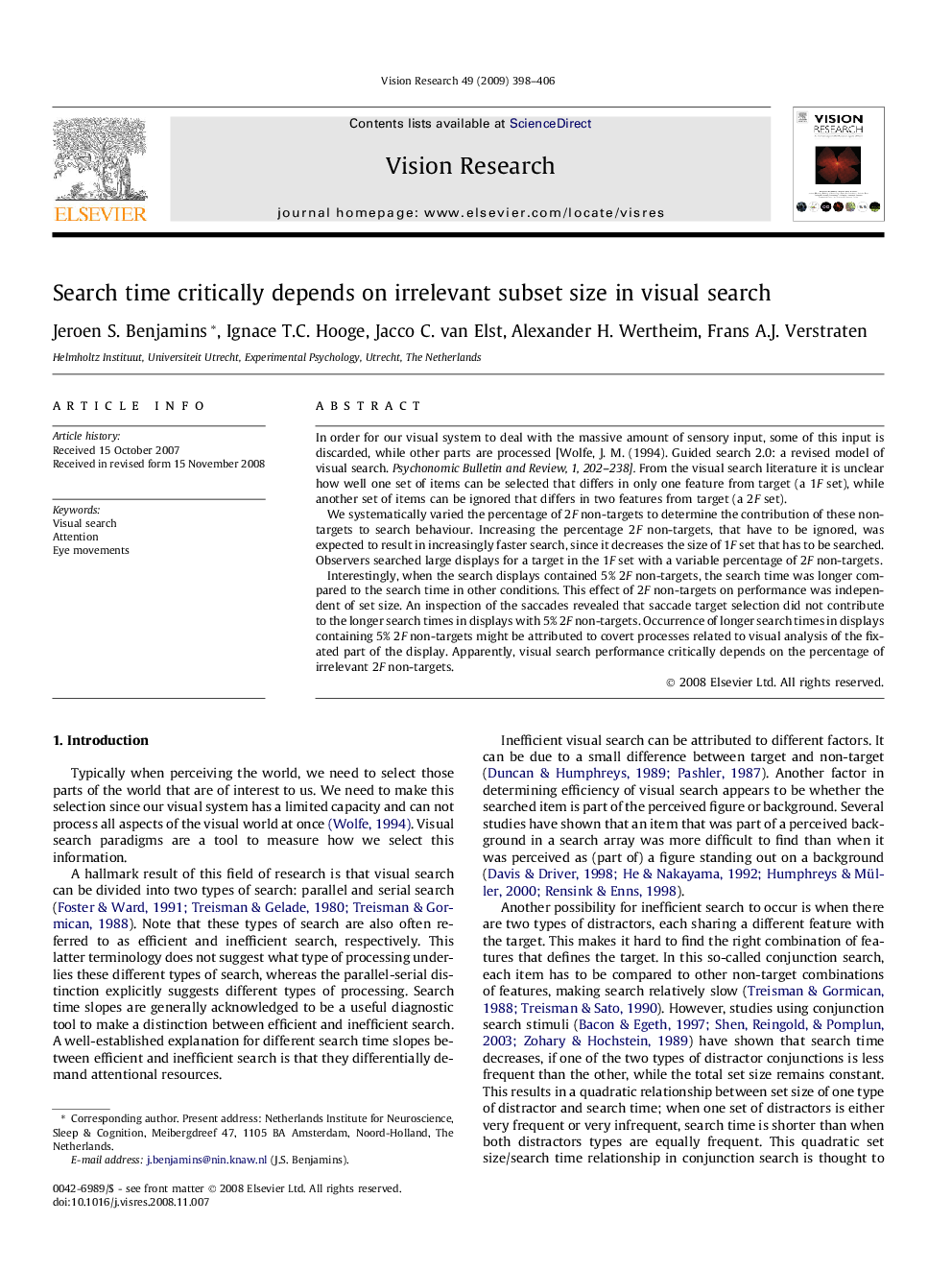| Article ID | Journal | Published Year | Pages | File Type |
|---|---|---|---|---|
| 4034816 | Vision Research | 2009 | 9 Pages |
In order for our visual system to deal with the massive amount of sensory input, some of this input is discarded, while other parts are processed [Wolfe, J. M. (1994). Guided search 2.0: a revised model of visual search. Psychonomic Bulletin and Review, 1, 202–238]. From the visual search literature it is unclear how well one set of items can be selected that differs in only one feature from target (a 1F set), while another set of items can be ignored that differs in two features from target (a 2F set).We systematically varied the percentage of 2F non-targets to determine the contribution of these non-targets to search behaviour. Increasing the percentage 2F non-targets, that have to be ignored, was expected to result in increasingly faster search, since it decreases the size of 1F set that has to be searched. Observers searched large displays for a target in the 1F set with a variable percentage of 2F non-targets.Interestingly, when the search displays contained 5% 2F non-targets, the search time was longer compared to the search time in other conditions. This effect of 2F non-targets on performance was independent of set size. An inspection of the saccades revealed that saccade target selection did not contribute to the longer search times in displays with 5% 2F non-targets. Occurrence of longer search times in displays containing 5% 2F non-targets might be attributed to covert processes related to visual analysis of the fixated part of the display. Apparently, visual search performance critically depends on the percentage of irrelevant 2F non-targets.
